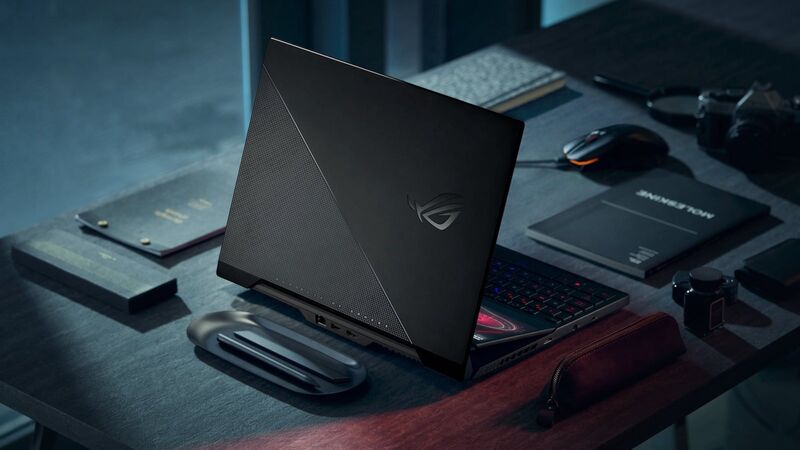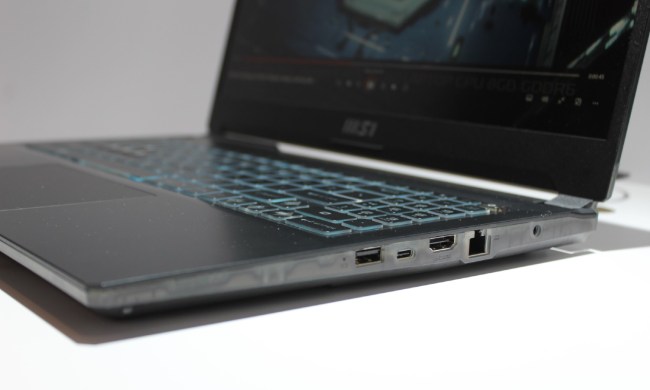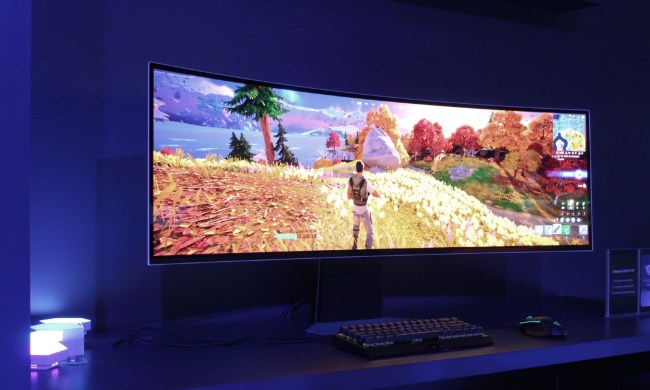HDMI 2.1 made a big splash at CES 2021. It’s a strange thing to say about a port, but it just may end up having a bigger impact on PC gaming than any flashy new gaming laptop or even a graphics card.
It also might help overcome the barrier that has existed between PC and console gaming since the beginning. Here’s why HDMI 2.1 could finally unite gaming — and why all gaming PCs should support it moving forward.
Breaking down walls

A divide has always existed in gaming: Consoles are for the living room and televisions, PCs are for desks and monitors. They’ve evolved separate from one another, developing different tech to fit their specific needs. In recent years, that’s become especially important when it comes to ports.
PCs have gradually moved away from HDMI. You’ll still find HDMI 2.0 in laptops and desktop graphics cards, but most desktop gamers currently favor the fast refresh rates of DisplayPort. All gaming monitors have it, as do desktop graphics cards. DisplayPort 1.4 granted PCs the ability to do 4K at 120Hz, which is something only high-end PCs have been able to use relatively recently. DisplayPort also supports important syncing technology such as G-Sync or FreeSync, to smooth out gameplay.
In the console world, HDMI is still king. The main reason is that older consoles couldn’t make use of those resolutions and refresh rates anyway. But the Xbox Series X and PlayStation 5 change all that. They’re more like PCs than any console before them, and by adopting HDMI 2.1, they have the same support for 4K 120Hz as DisplayPort.
We’ve reached a convergence point. As HDMI 2.1 begins to roll out, there might not be much of an advantage to using DisplayPort over HDMI. That presents an incredible opportunity to increase the value of laptops and PC gaming as a whole.
Gaming laptops need to embrace HDMI 2.1

At CES 2021, just one gaming laptop announced support for HDMI 2.1, the Alienware m15 R4. That might not sound too promising, but all evolutions in technology start small, especially when it comes to changes in standards.
That’s especially true since only the most recent graphics upgrade to the Nvidia RTX 30-series is what enables gaming laptops to play in 4K for the very first time. Manufacturers are only just starting to put 4K 120Hz screens in laptops, such as the Asus ROG Zephryus Duo 15 SE.
Now, imagine for a moment that you have one of these powerful new HDMI 2.1 gaming laptops. You use it for work during the day, and then can freely switch between the gaming monitor in your office and the television in your living room. Your wireless keyboard and mouse connect automatically at your desk, and when you move to the couch, so do your controllers. It would make the portability of gaming laptops so important, especially in a world where you still can’t buy the latest consoles or desktop graphics cards.
Of course, we have a long way to go before HDMI 2.1 is fully embraced by the PC community. Not only is it currently only on the Alienware m15 R4, it’s only being applied to select monitors. It’s also not even a standard feature of all televisions.
Meanwhile, VESA will be surely be advancing its own technology into the future with DisplayPort 2.0, which could again increase bandwidth to keep it ahead of HDMI.
But there’s a much better chance of PCs adapting to HDMI 2.1 than television and consoles switching to DisplayPort or USB-C. It’s the one port that already exists on nearly every device where we need it. That makes HDMI 2.1 the one hope for unifying high-end gaming across the many different platforms where it currently exists.


